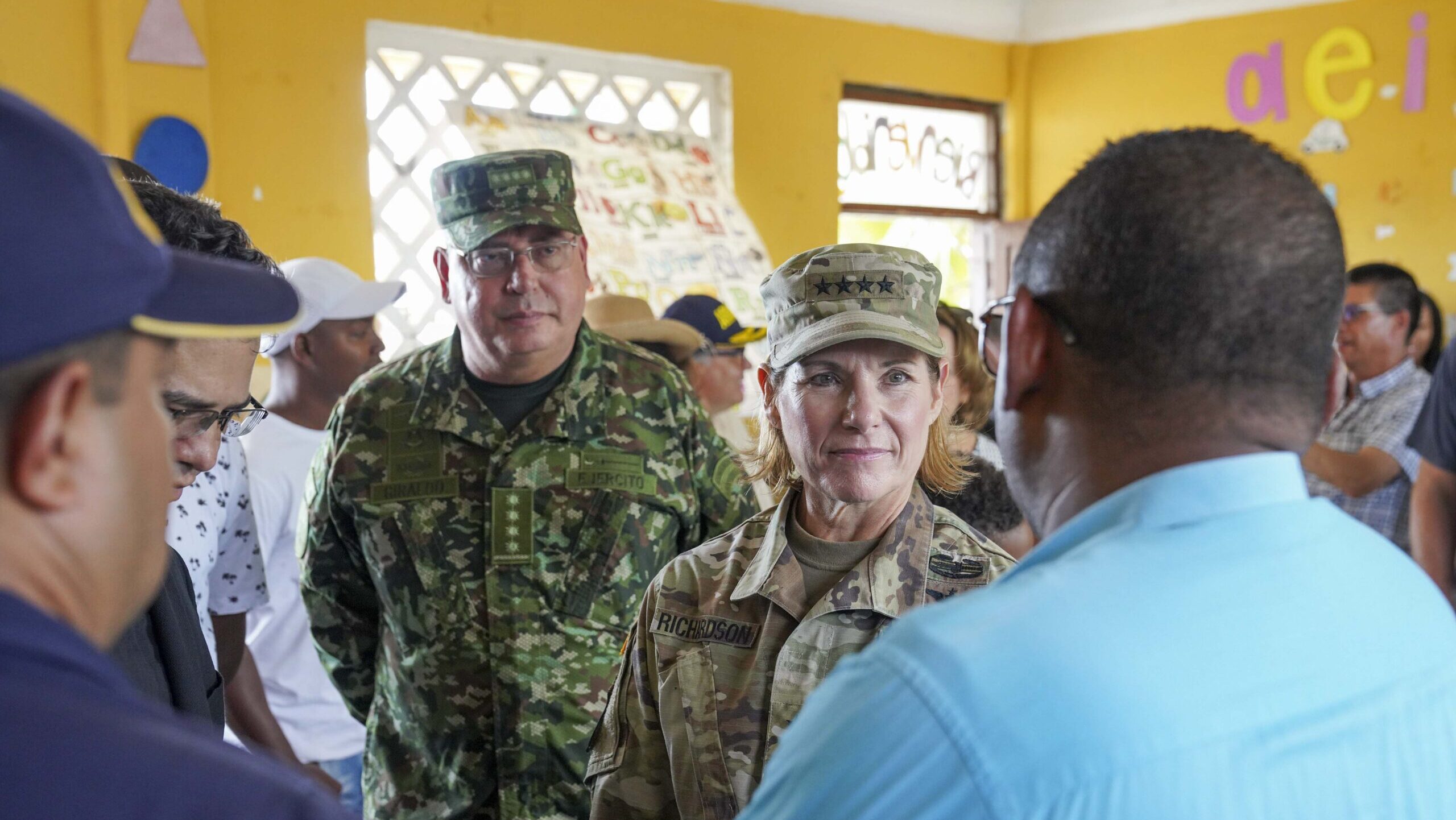
WASHINGTON — The US should embark on a “Marshall Plan” for Western Hemisphere nations still struggling to recover from the COVID-19 pandemic if it wants to keep Russian, and especially Chinese, influence in check in the region, the head of US Southern Command said today.
“I will tell you that I think from COVID, the impacts on the GDP, we do not understand how severe the impacts were in this region,” said Gen. Laura Richardson, commander of SOUTHCOM, whose area of responsibility includes Central America, South America and the Caribbean.
Richardson said that while “a couple of countries were okay,” for most there’s been a “severe economic downturn” that has now been exploited by transnational gangs and caused instability into which Moscow and Beijing have stepped with offers of cash or, in the case of China, Belt and Road Initiative projects.
“And we don’t have those kinds of tools in our kitbag. So how do we help with that? I firmly believe that we need a Marshall Plan for the region, or AKA an economic recovery act of like 1948, but instead 2024, 2025,” she told an audience at the Aspen Security Forum.
RELATED: In $323M wishlist, SOUTHCOM wants money to counter Chinese influence, drugs in South America
Richardson rattled off several ongoing American economic stability efforts in the region, including pending legislation, but suggested a more comprehensive approach was called for.
“How are we competing Team USA and Team Democracy with the tenders that are coming our from [other] countries? How are we getting our US quality investments and talking about our US companies investing in the region? We have a lot of companies in the region. I don’t think we’re branding Team USA as we should. It should be better. We’ve got to be bragging about what US quality investment does,” she said.
If discussions about finance and investment seem a bit far afield for a US combatant commander, that’s because Richardson said, “I really believe that economic security and national security are going hand-in-hand here in this hemisphere.”
‘All They See Are Chinese Cranes’
Beyond investment, earlier in the discussion Richardson identified one tool she’s currently missing in the competition with China in the region, and it wasn’t a new missile or a new warship — it was attention.
“Really, in terms of this region and the strategic competition that we have, which is very stiff … we can’t get around fast enough,” she told an audience of senior national security officials, lawmakers and tech and defense industry bigwigs. “So what I would ask you, all of you, and who you know, I need more visitors to the Western Hemisphere. I need more visitors to the Caribbean. I need more visitors to Central America. I need more visitors to South America.”
The point, she said, was for high-profile visitors to “tell [local officials] and show them how important they are to this region, and to the hemisphere that we all live in,” or Beijing would step into the void.
Richardson said her military command works closely with the State Department to try and show how earnest the US is in its support of the 32 nations and 11 territories in her area of operations, but “we don’t have enough visitors and high-profile visits” to meet with the highest-ranking officials of those governments.
“They don’t see what Team USA is bringing to the countries and the investments — even though the foreign direct investment is really high — they don’t see it,” she said. “All they see are the Chinese cranes and all the development and the Belt and Road Initiative projects.”
RELATED: Russian warships visit Cuba, sending a message to Washington, analysts say
Not helping matters, she said, are political logjams that keep US ambassadors from getting through the Senate confirmation process. Richardson highlighted that in especially “strategic” countries like Colombia, Brazil and Chile, the US is going or has gone without a confirmed ambassador for more than two years in each — five years for the international shipping hub of Panama.
“And there’s plenty of blame to go around on both sides of the aisle,” she said. “We just have to do better. When we talk about Team USA, we can’t be blocking our own field goals and sometimes we get in our way too much…
“We have to have our number one diplomat in that seat. The leaders look at that, the presidents of countries look at that as we are ignoring them when we can’t get our number one diplomat, their primary liaison to the United States, in that seat,” she said.
Richardson said that beyond the soft power influence the Belt and Road Initiative wields, she’s also concerned about China’s potential to use the projects to their strategic military advantage.
“It makes me a little suspicious when it’s in the critical infrastructure — a lot in the critical infrastructure of the countries in this region — deep water ports, 5G, cybersecurity, energy, space, there’s a lot of investment,” she said. “I’m worried about the dual-use nature of that. These are state-owned enterprises by a communist government that I worry about the flipping of that to a military application very quickly if something were to happen in the INDOPACOM [Indo-Pacific Command] region, something like that.”